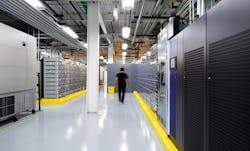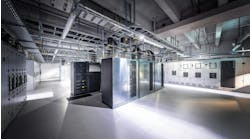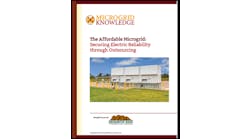In this this edition of Voices of the Industry, Robert McClary, Chief Operating Officer at FORTRUST, predicts colocation customers’ increased demand for greater visibility of their IT environments and data center transparency from their data center partners.
A new wave of data center transparency has just begun to peak over the horizon, and as colocation customers begin to understand the benefits that come with this newfound visibility into their IT environment, they will begin to demand it as a necessity from their colocation partners.
Robert McClary, Chief Operating Officer, FORTRUST
Traditionally, colocation data centers have operated in silos, but innovations in DCIM have made it possible for data centers to extend real-time visibility of power consumption, temperature and relative humidity data to their customers. A few colocation data centers are drawing back the curtains, so to speak, to allow their customers a transparent view of their IT environment. Given greater control, customers can optimize their IT and become more efficient, which in turn helps the data center, and saves the customer money. The ability to offer this technology to colocated customers will become a new performance metric of a quality data center. Unless a colocation provider has something to hide, why wouldn’t they share data with their clients if it would help both sides increase efficiencies? Some data centers consider this DCIM extension “unnecessary” or “too costly.”
Smarter Colocation
The transparency trend is due, in part, to companies becoming more knowledgeable about colocation data centers and about the infrastructure that supports their operations. Colocation customers want to deepen their understanding of their data centers, which are often large and critical business assets. Armed with this newfound intelligence, it follows that colocation customers will want to attain more granular control over their IT environments. From a financial standpoint, it is beneficial for them to know that their IT environment is operating at maximum efficiency. It is also good business practice to be absolutely certain that their data center partner upholds their service level agreements (SLAs) and be able to see it real-time.
Benefits to Both Sides
Companies should be suspicious of a colocation data center that withholds this information; that prefers to keep SLA data points inaccessible. A data center needs to be able to closely monitor their critical systems infrastructure to maintain the best possible levels of reliability. There is no reason not to make the results of this monitoring available to customers if this monitoring is already in place and operating effectively.
[clickToTweet tweet=”Companies should be suspicious of a colocation data center that prefers to keep SLA data points inaccessible. ” quote=”Companies should be suspicious of a colocation data center that prefers to keep SLA data points inaccessible. “]
The data center may counter that it’s unnecessary for the customer to have this level of access, but with the data a customer DCIM portal can offer— like measurements of power usage, temperature, and relative humidity— customers can observe whether their SLAs are being met, view real-time data about their IT environment, and trend and analyze this information to better plan for future improvements to their colocation environment. The monitoring that enables this portal also helps data center service providers by ensuring that clients get precisely what they pay for. This allows data centers to optimize their allocation of resources, such as power and cooling, throughout the facility. Greater transparency is a win-win situation for both sides.
Tearing Down Barriers
There are many hurdles to a customer facing DCIM portal becoming a widespread, common offering in the colocation data center industry. Upfront cost is the major barrier, but colocation data centers should keep the bigger picture in mind and trust that it will provide added value to both themselves and their clients in the long run. Colocation customers have begun to recognize the importance of a highly available data center, and more importantly, they have begun to look for the necessary parts that make up a highly available data center, such as a thorough and operational DCIM system. The colocation data centers that extend their DCIM to allow their clients access to information about their critical IT environments will become the most sought after. At present, most data centers do not offer DCIM specific customer portals, either because they can’t or won’t, but we will see more and more become available over the course of 2017 and in the years that follow as colocation customers begin to demand it.
Robert McClary is Chief Operating Officer at FORTRUST. FORTRUST is one of the most progressive high-availability data center services providers in North America, serving clients across the globe who depend on colocation services for a critical lifeline of their business. www.FTDC.com.






